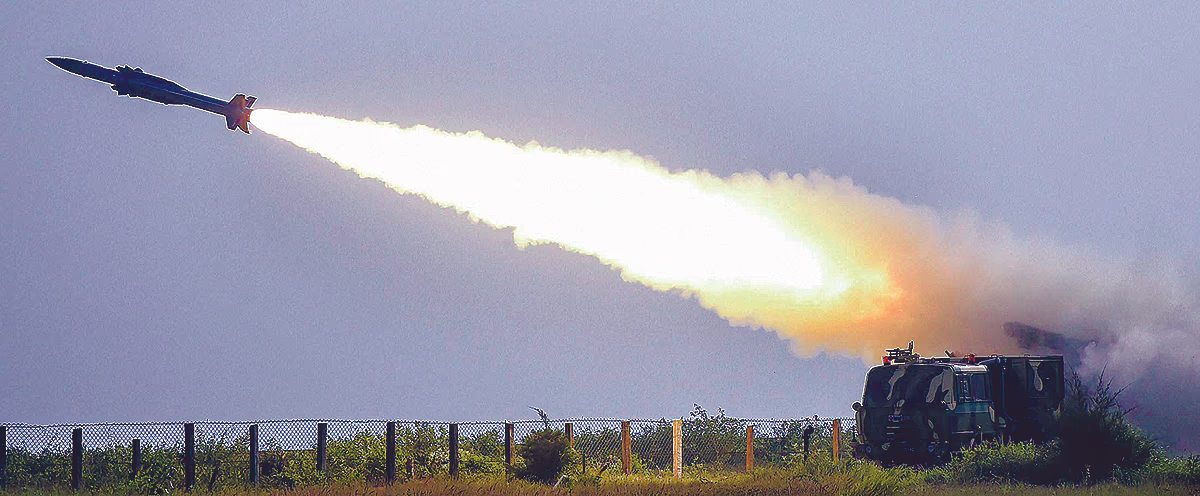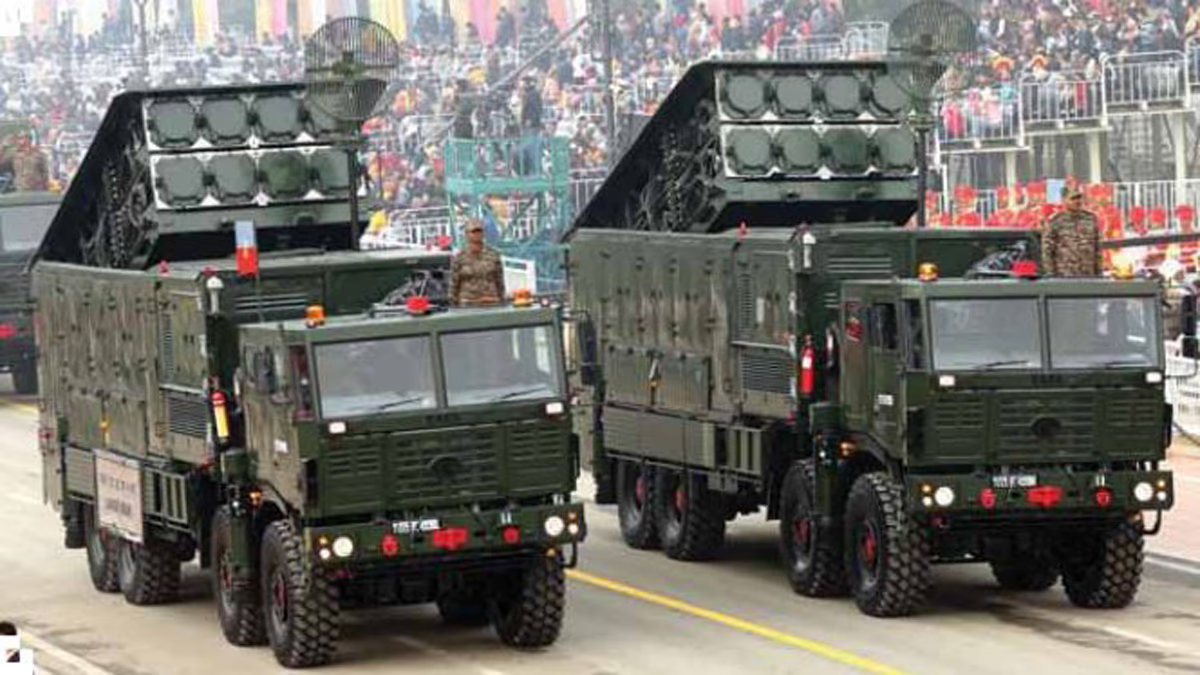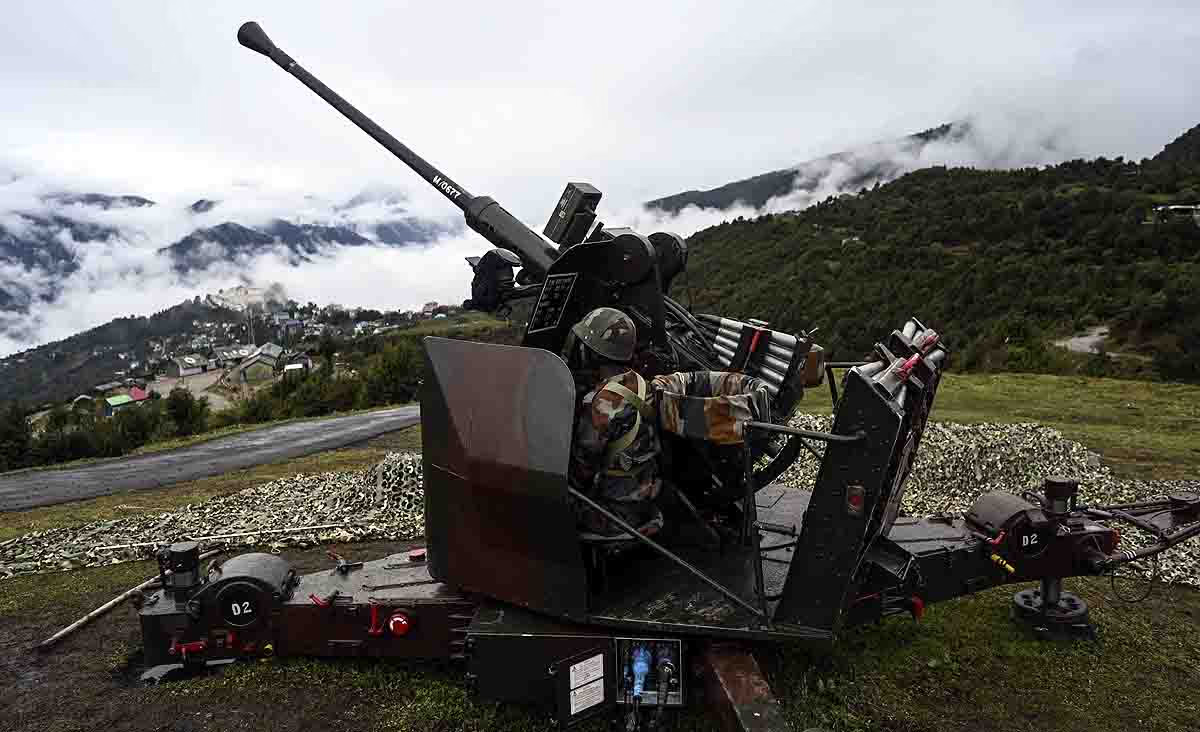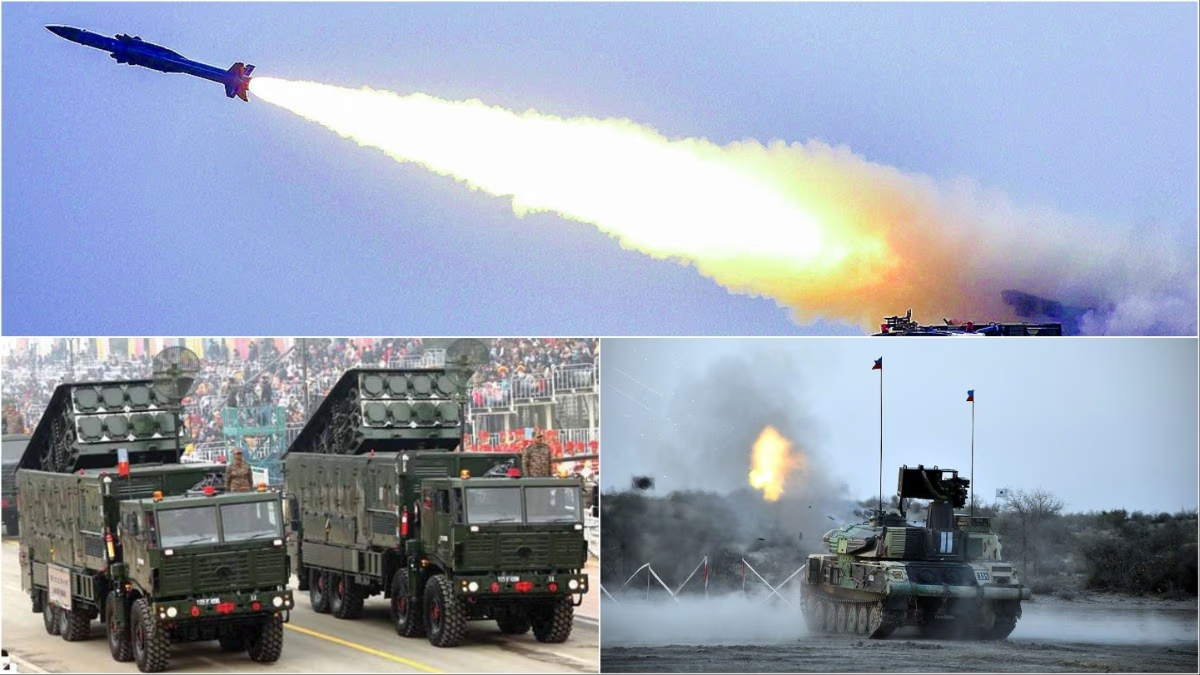On May 8, 2025, an audacious attempt by Pakistan to strike Indian military bases across 15 cities using drones and missiles was utterly derailed by India’s sophisticated air defense systems. Armed with cutting-edge technology, systems like Akash, MRSAM, Zu-23, L-70, and Shilka stood as formidable sentinels.
These systems form the bedrock of India’s air defense strategy, capable of neutralizing aerial threats. On the night of May 7-8, 2025, Pakistan’s drone and missile barrage aimed at cities including Srinagar, Jammu, Pathankot, Amritsar, Chandigarh, and others was deftly countered.
Related Read:
Following the Pahalgam terrorism in April 2025, where 26 civilians lost their lives, India launched Operation Sindoor-1, obliterating nine terrorist bases in Pakistan and PoK. The subsequent Pakistani assaults were met with India's integrated counter-UAS grid and air defense systems, decisively neutralizing threats.
1. Akash Missile System
Homegrown by DRDO, Akash is a medium-range surface-to-air missile system, a pillar of the Indian Army and Air Force.

Source: aajtak
Features
Range:
25-30 kilometers
Targets:
Fighter jets, drones, cruise missiles
Altitude:
Up to 18 kilometers
Guidance System:
Radar-based command guidance
Accuracy:
Over 90%
Deployment:
Mobile launchers provide flexibility
Contribution:
Akash obliterated a Pakistani JF-17 jet advancing toward Srinagar, playing a crucial role in tracking and destroying drones and missiles.
Related Read:
2. MRSAM (Medium Range Surface-to-Air Missile)
Developed with Israeli collaboration, MRSAM is an advanced air defense part of the Barak-8 family, deployed across Indian Army, Navy, and Air Force.

Source: aajtak
Features
Range:
70-100 kilometers
Targets:
Fighter jets, drones, ballistic and cruise missiles
Altitude:
Up to 20 kilometers
Guidance System:
Active radar homing and multi-function radar
Accuracy:
High precision with multi-target tracking
Deployment:
Mobile and naval platforms
Contribution:
MRSAM played a pivotal role in northern and western India, countering Pakistani drones and missiles with its long range and multi-target tracking.
3. Zu-23-2
The Soviet-engineered twin-barrel 23mm anti-aircraft gun, Zu-23-2, widely supports the Indian Army and Air Force.
Features
Range:
2.5 kilometers
Targets:
Low-flying drones, helicopters, and aircraft
Velocity:
970 meters/second
Guidance System:
Optical sight and radar-based tracking
Deployment:
Both mobile and stationary
Contribution:
Zu-23-2 eliminated low-flying Pakistani drones over Udhampur and surrounding areas, demonstrating swift firing and agility.
4. L-70
The Swedish-made, upgraded 40mm anti-aircraft gun, L-70, fortifies low-altitude defense within the Indian Army and Air Force.

Source: aajtak
Features
Range:
4 kilometers
Targets:
Drones, helicopters, low-flying aircraft
Firing Rate:
300 rounds per minute
Guidance System:
Radar-based fire control
Deployment:
Both stationary and mobile
Contribution:
L-70 was instrumental in targeting Pakistani drones, particularly in Punjab and Jammu and Kashmir, praised for its accuracy and rapid firing.
5. Shilka (ZSU-23-4)
Shilka, the Soviet-origin self-propelled anti-aircraft gun, features four 23mm cannons, forming a vital layer of low-altitude defense.
Features
Range:
2.5 kilometers
Targets:
Drones, helicopters, low-flying aircraft
Firing Rate:
4000 rounds per minute
Guidance System:
Radar and optical tracking
Deployment:
Self-propelled on an armored vehicle
Contribution:
Shilka’s formidable fire rate aided in annihilating Pakistani drones, with unmatched mobility and radar-based precision.
Role in Deflecting Pakistan's Attack
The Pakistani mission targeting military bases across regions like Avantipura, Srinagar, Jammu, Pathankot, and beyond was nullified by India's integrated counter-UAS grid and air defense mechanisms.
Akash and MRSAM:
Neutralized long and medium-range threats like missiles and fighter jets, downing a Pakistani F-16 and JF-17.
Zu-23, L-70, and Shilka:
These low-altitude systems crushed drones and minor aerial threats, especially in Udhampur where many drones were shot down by air defense units.
Strategic Importance
This incident showcased the efficacy of India’s air defense arsenal.
Layered Defense:
Akash and MRSAM confronted long-range threats, while Zu-23, L-70, and Shilka tackled low-altitude dangers.
Indigenous Technology:
Systems like Akash underline India’s self-reliance.
Technological Superiority:
The systems entirely neutralized Pakistani drones and missiles, affirming India's defensive capability.
Psychological Impact:
The failure weakened Pakistani military morale and highlighted India’s robust response capacity.




